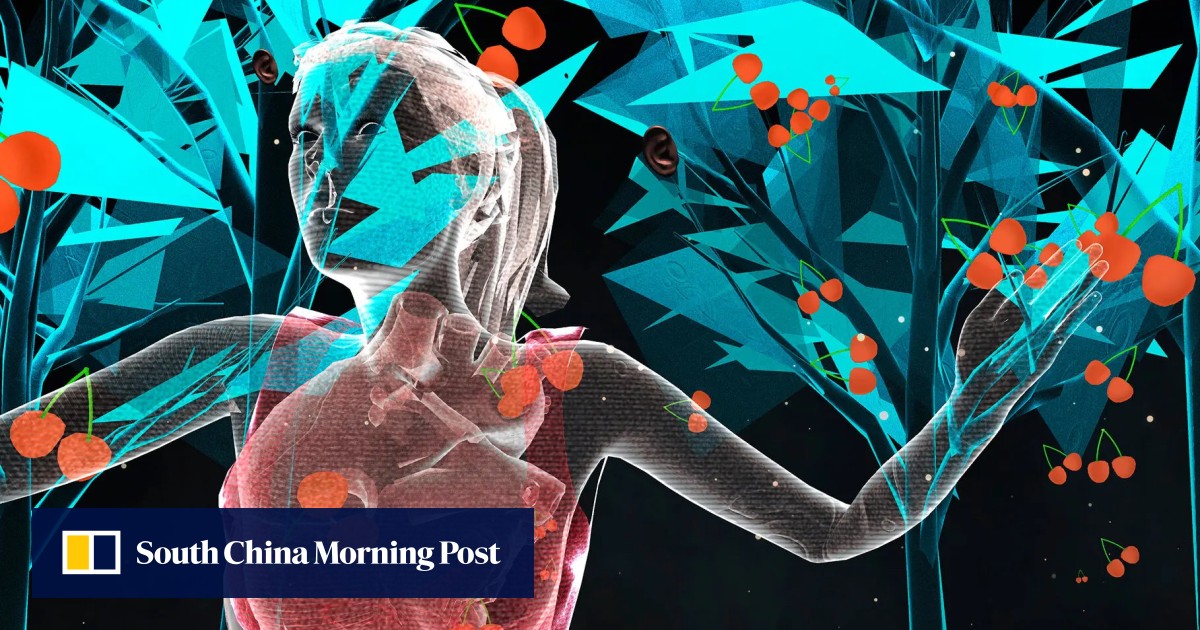A giant swan sailed into the auditorium and crashed, felled by a huge arrow still protruding.
Flowers burst into bloom, radiant in red and green, pink and blue.
In the theatre Richard Wagner conceived 150 years ago in a quest for innovation, another cutting-edge step took place this week at Germany’s venerable Bayreuth Festival.
On July 25, director Jay Scheib’s augmented-reality-infused production of Wagner’s Parsifal premiered in the Festspielhaus opera house where the German composer supervised the opera’s first staging in 1882.
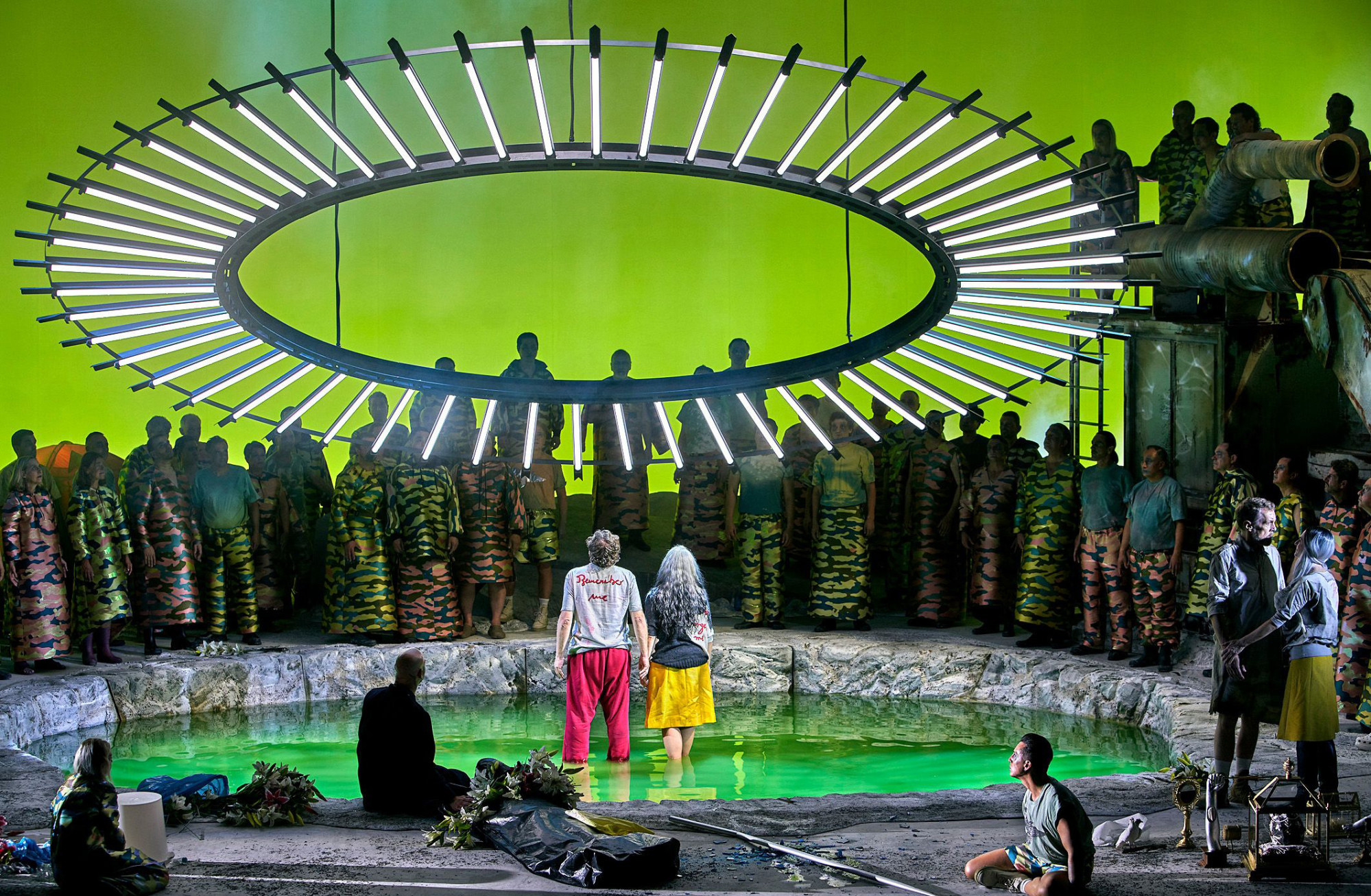
At the end of a 2023 season-opening, six-hour performance, an audience that included former German chancellor Angela Merkel applauded for 15 minutes, though 5-10 per cent booed the production team.
Augmented reality (AR) goggles brought fantastical images. In the first act, a moon and a fast-moving cloud-filled sky above people’s heads. If you looked down at your feet during the third, a craggy surface was visible that appeared to be below the auditorium.
As the director’s post-apocalyptic take on the Holy Grail unfolded, a world tree floated along with avatars. A fusillade of calcium batteries and white plastic bags drifted above the landscape along with birds, and the final image was a dove soaring above the desolation.
This part-theatre, part-art installation in Hong Kong is like ‘another world’
This part-theatre, part-art installation in Hong Kong is like ‘another world’
None of this happened physically.
“We sort of focus on a future society in which myth has become possible again and the grail once again somehow achieved a kind of mythic property,” Scheib says.
“But at the same time, we’re not that far in the future, and the third act is set around a broken lithium-ion [battery] field. We’re set in a world that is somehow post-planet and post-collapse of energy production.”
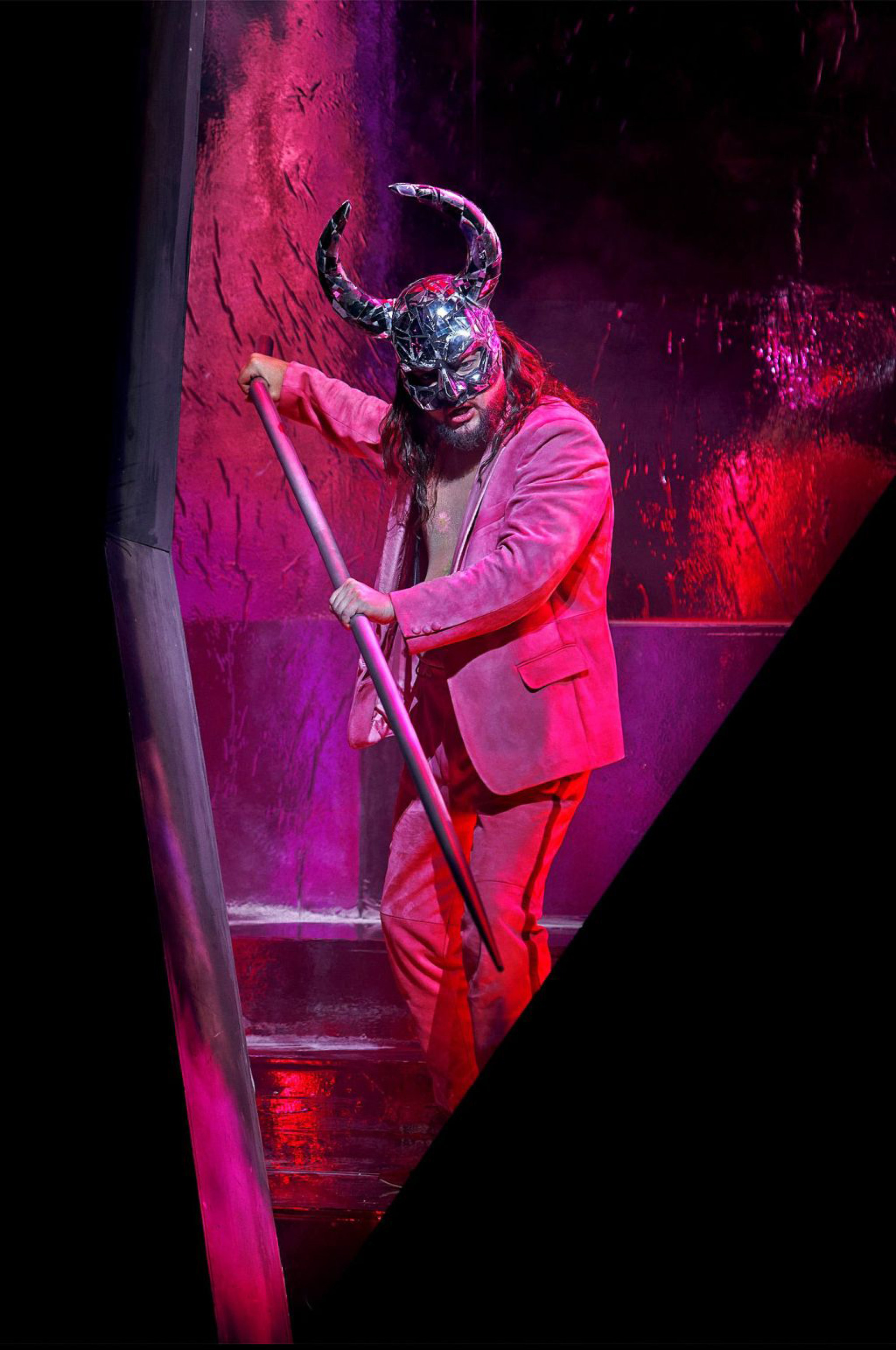
AR use was at times visually busy: insects and starbursts appeared tangential to the action, and there were a few instances of slight judder.
Many of the digital visuals had a strong impact, such as arrows shot at the audience. A spear through an ear referenced Hieronymus Bosch’s painting The Garden of Earthly Delights.
Scheib’s staging, just Bayreuth’s 11th Parsifal production, paid homage to Wieland Wagner’s breakthrough 1951 minimalist sets with a circle of light that represented both the knights’ round table and a flying nimbus above the wasteland.
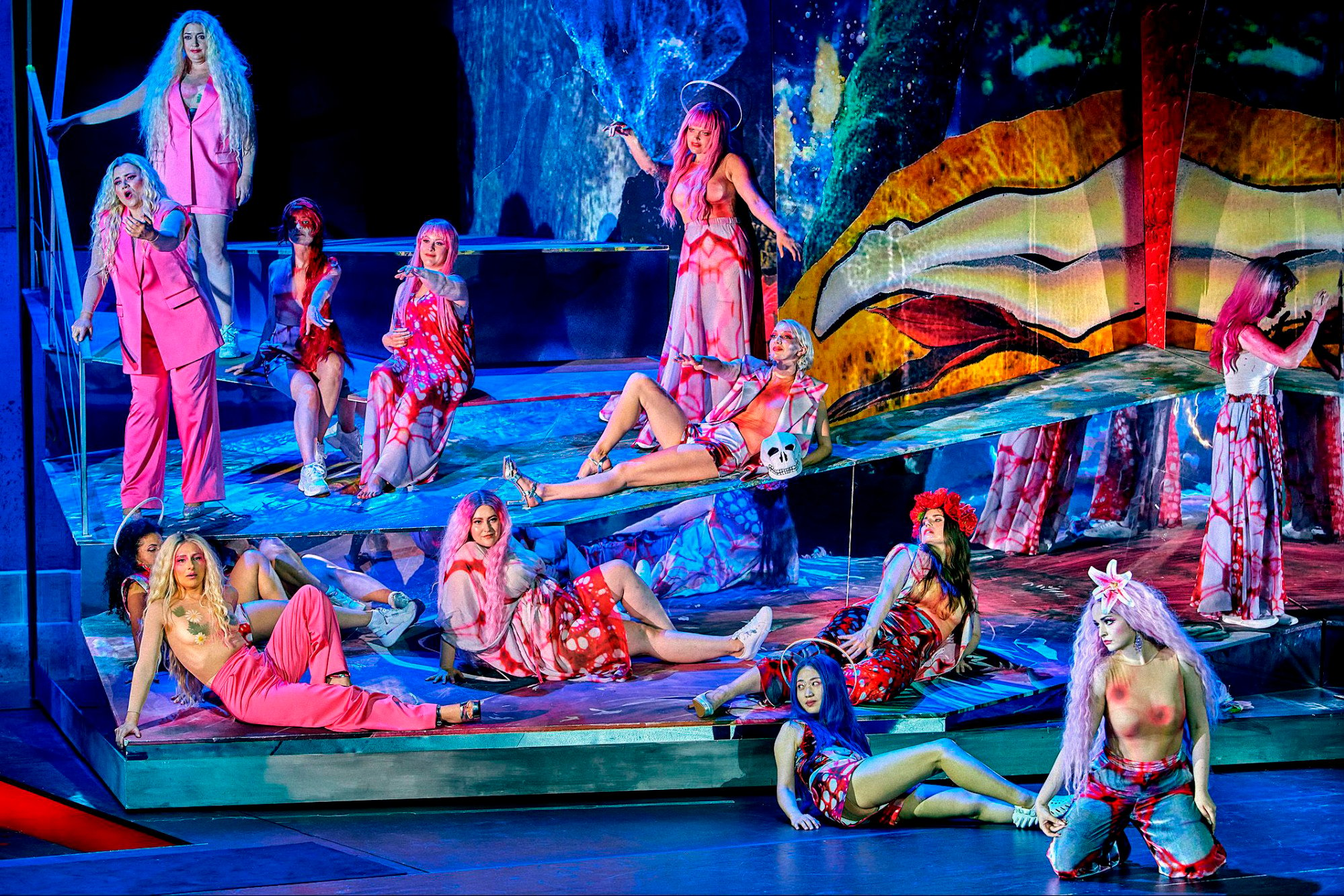
Scheib is a 53-year-old professor at America’s Massachusetts Institute of Technology (MIT) who directed Thomas Adès’ Powder Her Face and the Meat Loaf/Jim Steinman musical Bat Out of Hell. He was contacted by Bayreuth general manager Katharina Wagner – the composer’s great-granddaughter – about five years ago.
They were forced by financial constraints to have only 330 goggles for an audience of 1,925 but hope to increase the total for revivals in the next few years.
The goggles were somewhat cumbersome – audience members who use glasses had to send in prescriptions for corrective inserts that were only approximate, and had to arrive well before the 4pm curtain raising for a fitting. The inserts easily slipped off.
Not a lot of people have sat down in a performance and seen something for that entire length of time in glasses on your face
The additional visuals were akin to ads at sports stadiums that are viewed on the telecast but aren’t really there. At some points the different views were dramatic: Parsifal’s seizing the spear provoked giggles from some of those watching without goggles.
The BR-Klassik network televised the premiere in Germany.
Scheib arrived for technical work on May 15 and the cast began rehearsals on June 5, a long lead-up leading to intense, nuanced performances. Conductor Pablo Heras-Casado made his debut in Bayreuth’s covered orchestra pit. .
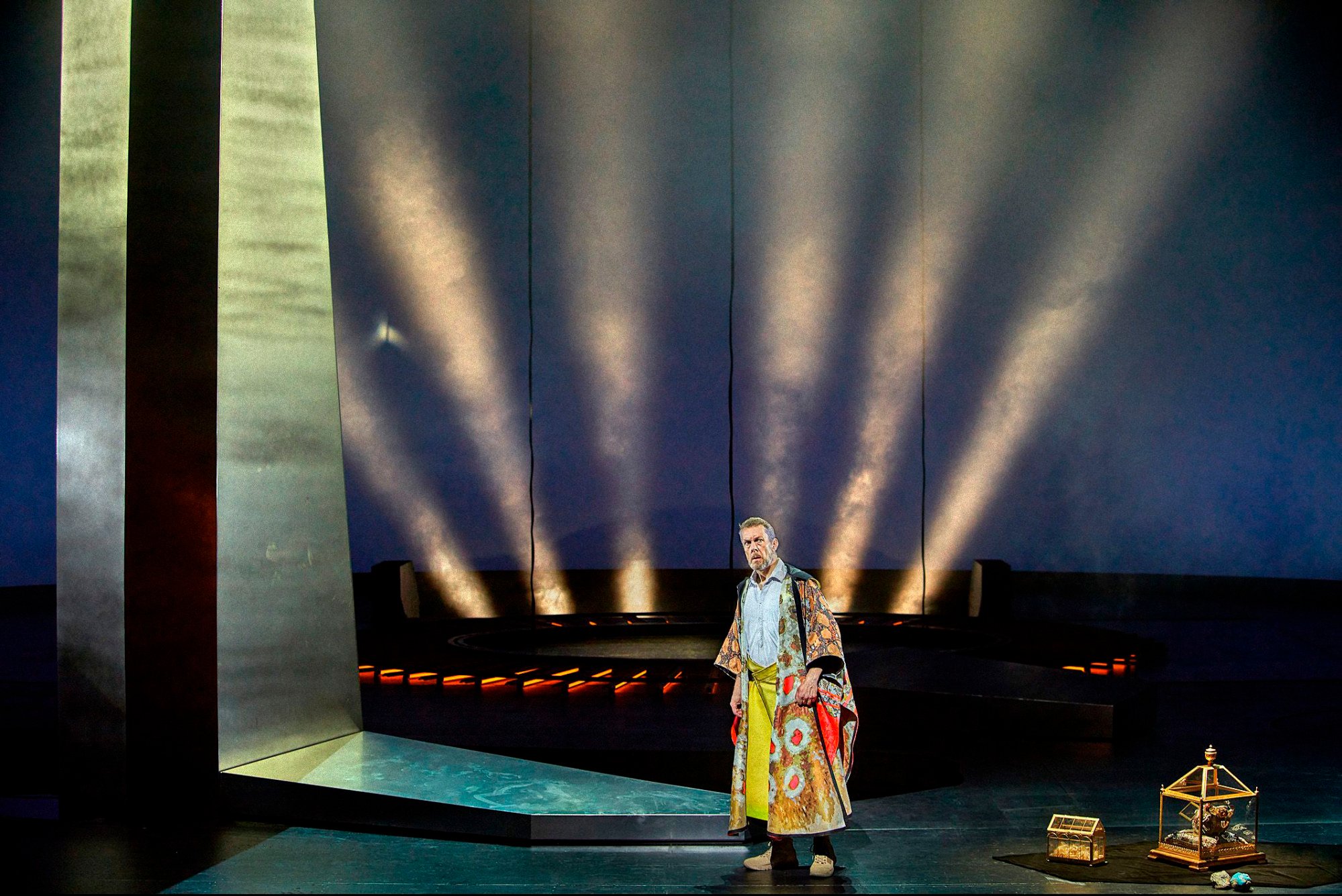
Mezzo-soprano Elina Garanca (who played the role of Kundry) and baritone Jordan Shanahan (Klingsor) sang at the Wagner Festival for the first time, joined by tenor Andreas Schager (Parsifal) and bass Georg Zeppenfeld (Gurnemanz).
Parsifal wore a torn raincoat around a bulletproof vest for the first act and Gurnemanz a yellow sarong. Klingsor and his Flower Maidens were dressed in hot pink – a decision made in 2021, long before the recent Barbie film.
The home audience and those without goggles saw a tamer take but with the same message: human consumption destroyed civilisation and left those protecting and seeking the grail unmoored from their tasks. Parsifal closes the opera by smashing the chalice.
New York Philharmonic in Hong Kong: polish and pyrotechnics
New York Philharmonic in Hong Kong: polish and pyrotechnics
Scheib brought in MIT technical instructor Joshua Higgason for video and the AR.
“We can start to see visions and hallucinations,” Higgason said. “We can start to put different symbols and different signs into the air that would be really difficult to put into the world otherwise.
“Not a lot of people have sat down in a performance and seen something for that entire length of time in glasses on your face.
“I do think that this is kind of opening a different relationship with image and object, both in the physical world and the virtual world.”

